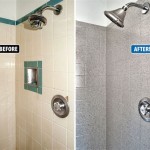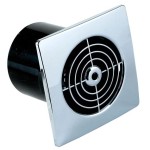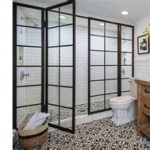68 Inch Bathroom Vanity Single Sink: A Comprehensive Guide
The 68-inch bathroom vanity with a single sink represents a significant investment in both the aesthetic appeal and functional utility of a bathroom space. This size vanity offers a considerable amount of countertop and storage space, making it an ideal choice for master bathrooms, shared bathrooms with ample room, or for homeowners seeking to maximize organization and counter space. Selecting the right vanity requires careful consideration of various factors, including material, style, countertop options, storage configuration, and installation requirements. This article provides a detailed overview of the considerations involved in choosing a 68-inch bathroom vanity with a single sink.
The dimensions of a 68-inch vanity provide a substantial footprint, translating to ample room for toiletries, linens, and other bathroom essentials. The single sink design allows for generous countertop space on either side, beneficial for daily routines involving multiple users or for those who appreciate the extra workspace. The larger size also allows for more elaborate design features, such as multiple drawers, shelving units, and decorative hardware, contributing to the overall sophistication of the bathroom.
Key Point 1: Material Considerations for Longevity and Aesthetics
The material of a 68-inch bathroom vanity significantly impacts its durability, maintenance requirements, and overall aesthetic. Common materials include solid wood, plywood, MDF (Medium-Density Fiberboard), and metal. Each material possesses unique advantages and disadvantages. Solid wood vanities, particularly those constructed from hardwoods like oak, maple, or cherry, offer exceptional durability and a classic, timeless appearance. These vanities are resistant to warping and cracking, provided they are properly sealed and maintained. However, solid wood vanities tend to be more expensive than those made from engineered wood products.
Plywood presents a viable alternative to solid wood, offering a balance of strength and affordability. High-quality plywood, manufactured with waterproof adhesive, is less susceptible to moisture damage compared to solid wood, making it a suitable option for bathroom environments. Plywood vanities are often used as a base for veneers or laminates, allowing for a wider range of aesthetic possibilities.
MDF is a cost-effective material commonly used in vanity construction. It consists of wood fibers bonded together with resin under high pressure and heat. MDF possesses a smooth, uniform surface, making it an ideal substrate for painting or applying decorative finishes. However, MDF is more vulnerable to moisture damage compared to solid wood or plywood, making it crucial to ensure proper sealing and ventilation in the bathroom.
Metal vanities, often crafted from stainless steel or powder-coated steel, offer a modern, industrial aesthetic. They are highly durable and resistant to moisture, making them a practical choice for busy bathrooms. Metal vanities require minimal maintenance and are easy to clean. However, they may lack the warmth and visual appeal of wood vanities. The choice of material should be based on budget, desired aesthetic, and the anticipated level of moisture exposure in the bathroom environment.
Key Point 2: Countertop Selection and Sink Integration
The countertop is a dominant feature of any bathroom vanity, impacting both its visual appeal and functionality. Common countertop materials for 68-inch vanities include natural stone (granite, marble, quartz), solid surface (acrylic), and engineered stone (quartz). Each material offers distinct characteristics in terms of durability, maintenance, and aesthetic qualities.
Granite countertops are prized for their natural beauty, durability, and heat resistance. Each granite slab is unique in its veining and coloration, adding a touch of luxury to the bathroom. Granite requires regular sealing to prevent staining and bacteria absorption. Marble countertops offer a sophisticated, elegant aesthetic, but they are more porous and susceptible to staining and etching compared to granite. Marble requires more diligent maintenance and may not be suitable for high-traffic bathrooms or households prone to spills.
Quartz countertops are engineered stone products composed of crushed quartz crystals bonded together with resin. Quartz offers exceptional durability, stain resistance, and low maintenance requirements. It is available in a wide range of colors and patterns, mimicking the look of natural stone while offering improved consistency and uniformity. Solid surface countertops, made from acrylic or polyester resins, are non-porous, seamless, and easy to repair. They are resistant to stains and bacteria, making them a hygienic choice for bathrooms. Solid surface countertops offer a smooth, contemporary aesthetic and can be molded into various shapes and sizes.
The sink integration is a crucial part of the countertop selection. There are several types of sink installations to consider, including undermount, overmount (drop-in), and vessel sinks. Undermount sinks are installed beneath the countertop, creating a seamless, easy-to-clean surface. Overmount sinks are installed from above, with the rim of the sink resting on the countertop. Vessel sinks sit on top of the countertop, adding a dramatic, sculptural element to the bathroom. The choice of sink style should complement the overall aesthetic of the vanity and the bathroom design.
Key Point 3: Storage Solutions and Functional Design
A 68-inch bathroom vanity provides ample space for incorporating various storage solutions, maximizing organization and minimizing clutter. Common storage configurations include drawers, cabinets, shelving units, and pull-out organizers. Drawers are ideal for storing smaller items such as toiletries, makeup, and grooming supplies. They can be equipped with dividers or organizers to further enhance organization. Cabinets provide ample space for storing larger items such as towels, linens, and cleaning supplies. They can be equipped with adjustable shelves to accommodate items of varying sizes.
Shelving units offer open storage space for displaying decorative items or storing frequently used items. They can be incorporated into the vanity design or added as separate units. Pull-out organizers, such as waste baskets or towel racks, provide convenient storage solutions and maximize the use of space within the vanity. Consider the specific storage needs of the household when selecting a vanity with the appropriate configuration of drawers, cabinets, and shelves.
The functional design of the vanity also includes considerations such as the height of the vanity, the depth of the sink, and the placement of the faucet. Standard vanity heights range from 30 to 36 inches. The ideal vanity height depends on the height of the users and their personal preferences. The depth of the sink should be adequate to prevent splashing, but not so deep that it becomes uncomfortable to use. The placement of the faucet should be carefully considered to ensure proper water flow and prevent water damage to the countertop.
Furthermore, the style of the vanity should align with the overall aesthetic of the bathroom. Popular vanity styles include traditional, contemporary, farmhouse, and transitional. Traditional vanities often feature ornate details, such as carved moldings, raised panel doors, and antique brass hardware. Contemporary vanities typically have clean lines, minimalist designs, and sleek, modern hardware. Farmhouse vanities often incorporate rustic elements, such as distressed wood finishes, shiplap panels, and vintage-inspired hardware. Transitional vanities blend elements of traditional and contemporary styles, creating a versatile and timeless aesthetic.
Finally, consider the installation requirements of the 68-inch bathroom vanity. Wall-mounted vanities offer a floating appearance and are easier to clean beneath. However, they require strong wall supports and may not be suitable for all bathroom configurations. Freestanding vanities are easier to install and offer more flexibility in placement. However, they may require more floor space. It is essential to consult with a qualified plumber to ensure proper installation and plumbing connections.
Choosing the right 68-inch bathroom vanity with a single sink requires careful consideration of materials, countertop options, storage configurations, and installation requirements. By carefully evaluating these factors, homeowners can select a vanity that enhances both the aesthetic appeal and functional utility of their bathroom space. The goal is to find a vanity that not only meets the practical needs of the household but also complements the overall design and style of the bathroom.

68 Inch Wide Bathroom Vanities With Tops At Com

Anton Double Bathroom Vanity 68 78 Modern Elegance West Elm

68 Inch Wide Bathroom Vanities With Tops At Com

68 Inch Wide Bathroom Vanities With Tops At Com

Virtu Usa Dior 68 Single Square Sink Espresso Top Vanity In With Brushed Nickel Faucet And Mirror

68 Inch Wide Bathroom Vanities With Tops At Com

Nivencai 36 In W X 18 D 34 H Single Sink Freestanding Bath Vanity Gray With White Resin Top And Usb Charging Port Nvbtvwt 68 The Home Depot

68 Inch Wide Bathroom Vanities With Tops At Com

Home Decorators Collection Aberdeen 30 In Single Sink Antique Oak Bath Vanity With Carrara Marble Top Assembled 30ao

Bathroom Vanities West Elm
Related Posts







